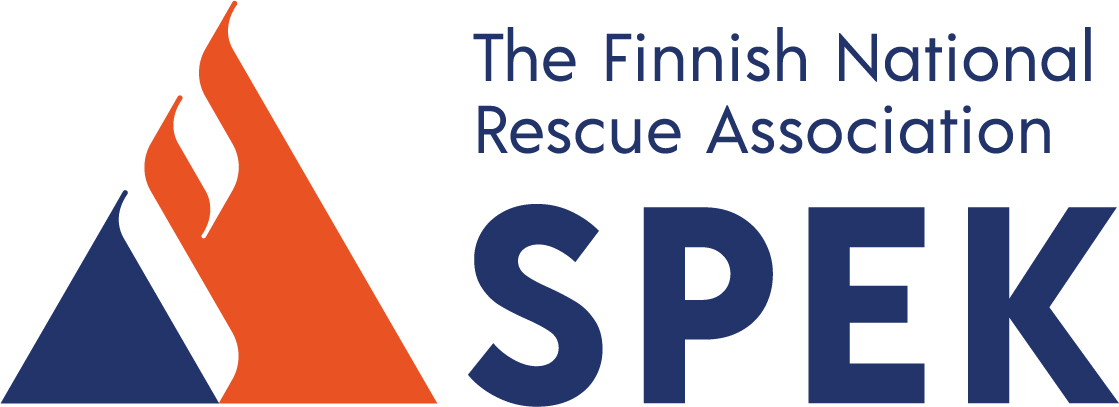In modern buildings, fire prevention technology is increasingly being integrated into the other technology services of the building. A fire alarm in a shopping centre, for example, must automatically trigger measures aimed at containing and extinguishing the fire. It is also of the utmost importance that people are safely guided out if necessary and that the risks to business operations are minimised. This requires technical solutions where various systems are interconnected.

In order to combine the building and its technological solutions into one fire-safe entity, coordination and exchange of information are needed between the professionals responsible for both electrical design and fire prevention technology. When a fire is detected by a fire detector in a fire-safe building, the cooperation between the fire safety equipment and the building services will lead to the desired outcome: the fire extinguishing equipment will deploy, electrical locks will open, air conditioning will stop and smoke removal will begin. In addition, the building may have lights and announcements that help the people exit the building safely.
The Fire Prevention Technology Development Group coordinated by Finnish National Rescue Association has published an operating model specifically for electrically skilled persons and fire prevention technology professionals. The aim is to harmonise the documentation related to the implementation of fire prevention technology in both the construction and renovation of buildings. Uniform documentation would facilitate the inspection, commissioning and use of fire prevention technology systems.
Careful documentation of the building’s fire prevention technology would help solve many problems
The professionals responsible for the design of the electrical systems and fire prevention technology must have a clear understanding of the operation of the various equipment and their effects on each other. In addition, they must have thorough knowledge of the technological advancements and the impact of regulations concerning the design of the systems.
‘The building’s fire prevention technology systems must be documented, and the documentation must include the criteria used for selecting the particular control system. This would make it easier to determine the criteria for the implementation of the system also in the future, as well as facilitate the maintenance of the system and ensuring its functionality,’ says Lauri Lehto, Fire Safety System Specialist at the Finnish National Rescue Association.
‘Having the building’s fire prevention system and its documentation in order is the best way to ensure the undisturbed operation of the building in everyday life, so that a possible fire or the system will not interrupt the operation of a shopping centre, for example. And in the event of a fire, the building would be significantly easier to return to after the incident. It is therefore important to not only prevent or stop a fire and safely evacuate the people, but also to quickly have the premises back in use’, says Matti Helkamo, Head of Business Line (Siemens) at Palonilmaisualan yhdistys.
Construction projects are often long and the planning takes time, which means there might be changes in staff during the course of the project. Coordination is therefore needed, so that essential know-how is not lost. In some cases, vulnerabilities are discovered concretely during maintenance work. In these situations, there has been insufficient information available on the overall systems, and the necessary maintenance procedures and collaborative tests have not been carried out. The inspection and repair work performed during maintenance will add to the costs.
‘It is important to begin the process by mapping the entire system and writing a description, so that everyone knows exactly what is being done. Otherwise we might find ourselves in a situation where individual equipment are being installed in the building without realizing all the connections between the fire prevention technology and other building services,’ says Timo Nevalainen, Senior Specialist (Granlund design company) and equipment design representative in the Fire Prevention Technology Development Group.
Shortcomings have been found in inspections
Periodic and commissioning inspections performed on fire prevention technology systems have shown that the documentation does not always adequately indicate which facility controls or monitors which part of the system. In these cases, it has not been clear enough for the inspectors how the control and monitoring entities are intended to work.
‘At the moment, 20 per cent of the shortcomings revealed in the inspections of fire detectors are related to documentation and locating the detectors, 15 per cent to the placement of the detectors and 10 per cent to the control systems. As for the fire-extinguishing systems, 20 percent of the shortcomings have been related to locating and documentation and 20 per cent to the valves and fire extinguishing control panels’, says Inspector Petri Puttonen (Alarm Control), inspection agency representative in the Fire Prevention Technology Development Group.
What is often neglected in documentation is that the fire and rescue department representative must also be able to understand how the controls work and how they can be affected. The fire and rescue department’s personnel do not have location-specific training, and the supervision often relies on the readily available information on the system plans and their implementation.
‘When presented with the planning information related to the fire protection system, the representative of the fire and rescue department must be able to make sure that the fire protection system is functioning properly and that the required safety standards are met. This is not possible if some of the information is missing,’ says Fire Inspector Expert Kimmo Kartano (Helsinki Rescue Department), representative of the partnership network of the rescue services in the Development Group.
